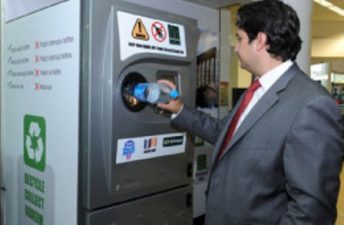Egypt, Jordan, Lebanon, Libya, Morocco, the Palestinian Authority, Tunisia and Turkey were among the representatives at the SafeMed course on the environmental risk of ballast water last month. The course was offered in Malta and is designed to emphasize the effective implementation of the International Convention for the Control and Management of Ships’ Ballast Water and Sediments (BWM Convention).
SafeMed is funded by a number of Mediterranean nations. It is designed to encourage cooperation between members in maritime safety, security and the prevention of pollution and ecological damage from shipping. Ballast water exchanges are designed to facilitate safe and efficient shipping but if not carefully managed, they can spread invasive species around the world.
The invasion of the Black and Caspian Seas by North American comb jellyfish, for example, is a well-studied example of the harmful effects of bilge water exchanges. By the mid 1990s, North American comb jellyfish comprised up to 90% of the biomass in the Black Sea and has cost more than one billion US dollars in damage to local fisheries.
The damage caused by invasive species in ballast water can go both directions.
The zebra mussel invasion of North America, which has been estimated to cost up to 500 million US dollars per year, is believed to have come from the Black and Caspian Sea into North America via the ballast water of cargo ships in the Great Lakes.
Addressing the risks of ballast water invasive species will require international cooperation, a set of global standards and training of maritime workers on the implementation of these standards. SafeMed’s course is a step in the right direction.
Jellyfish Lake photo by Anaxibia (own work) CC-BY-SA-3.0 or GFDL via Wikimedia Commons
More on the Mediterranean Sea:
Mediterranean Agency Could Avert Offshore Natural Disasters
Is the Mediterranean Sea Harboring a Giant Plastic Patch?
Dealing With Jellyfish Invasions off Israel and Lebanon Coasts





Good that Israel’s Amiad Filtration Systems has the solution to this problem. It has won a 10 year contract with Calgon Carbon Corporation for cleaning ships’ ballast water. Amiad’s Arkal automatic self-cleaning disc filtration technology protects the marine environment from invasive species transported by ballast water. I wonder if SafeMed will have mentioned this in their course?
http://www.globes.co.il/serveen/globes/docview.asp?did=1000740643&fid=1725